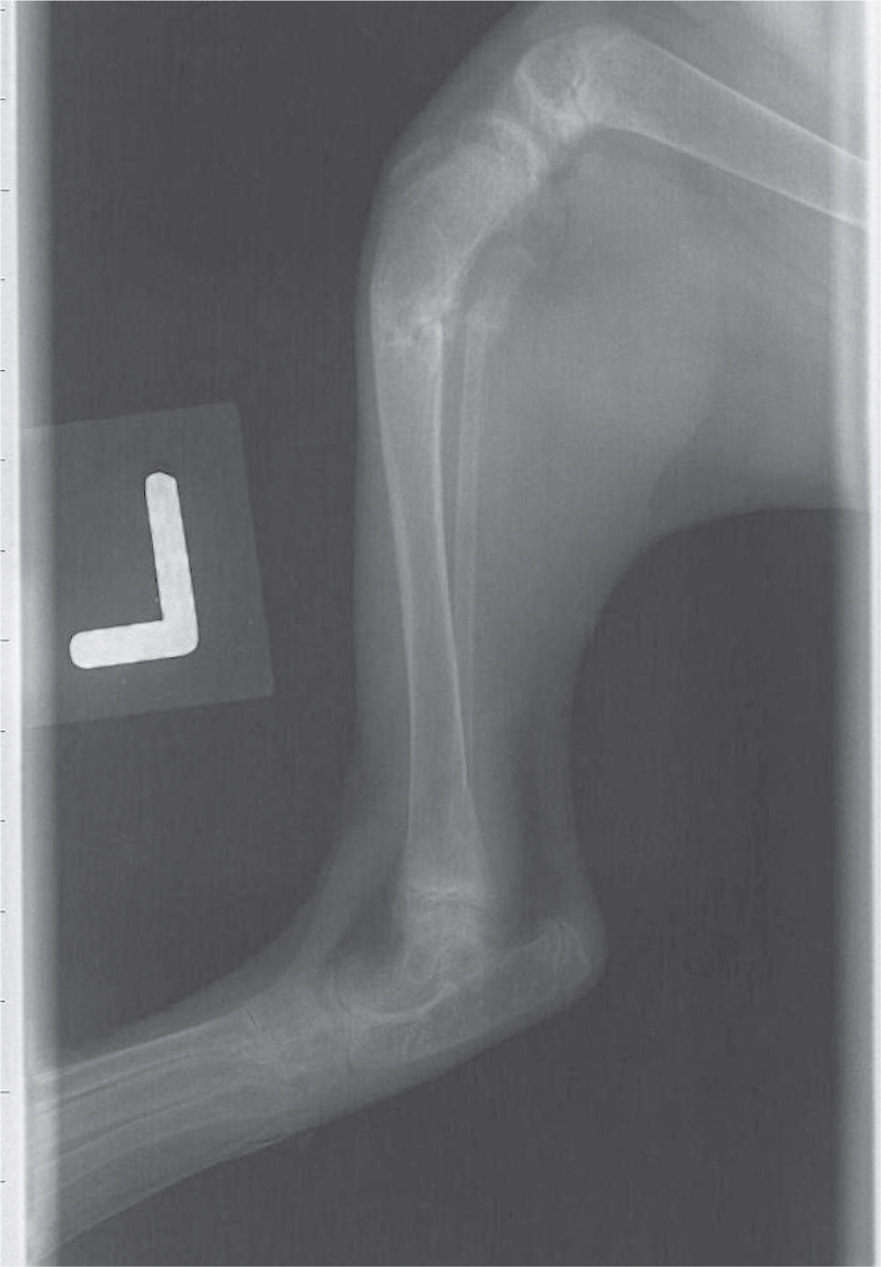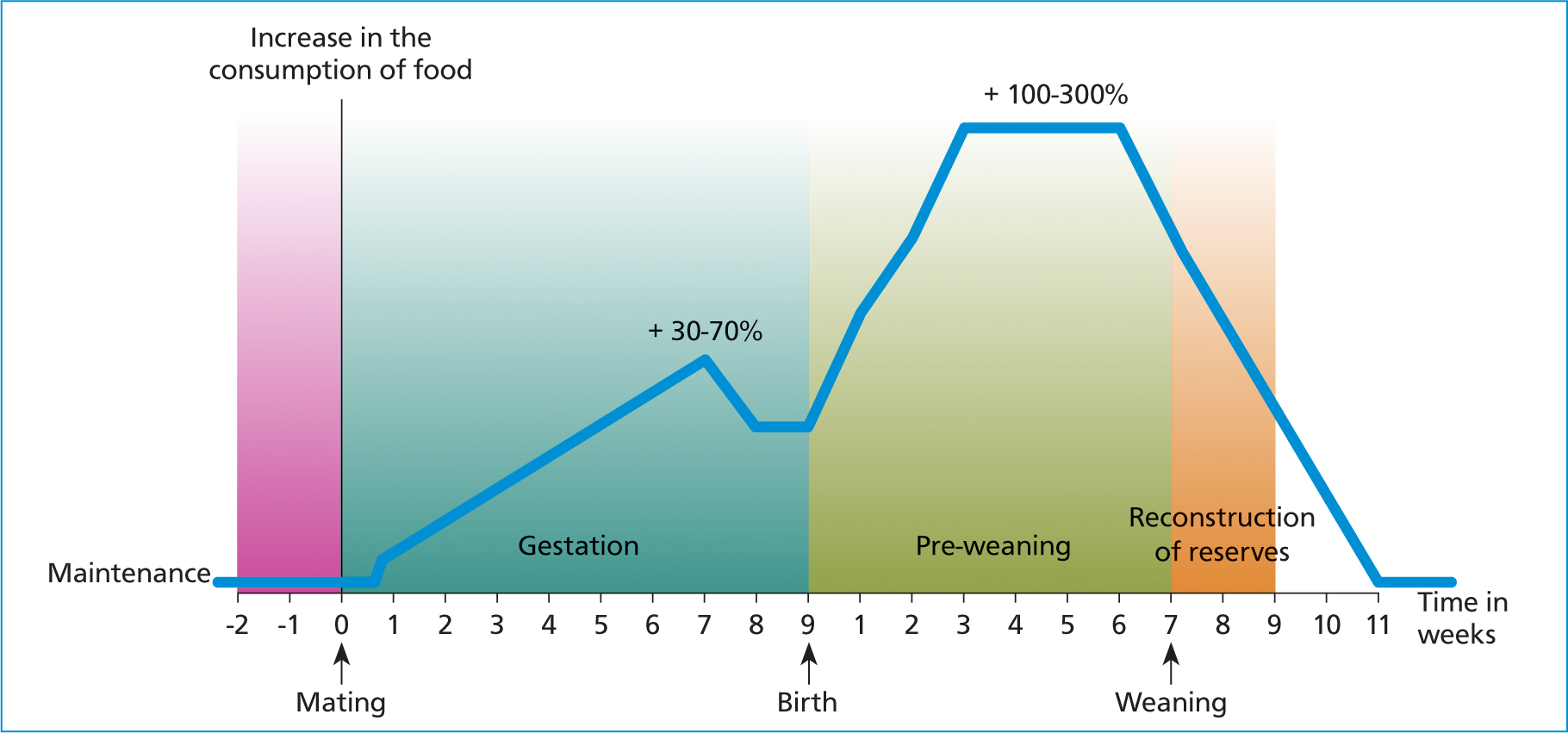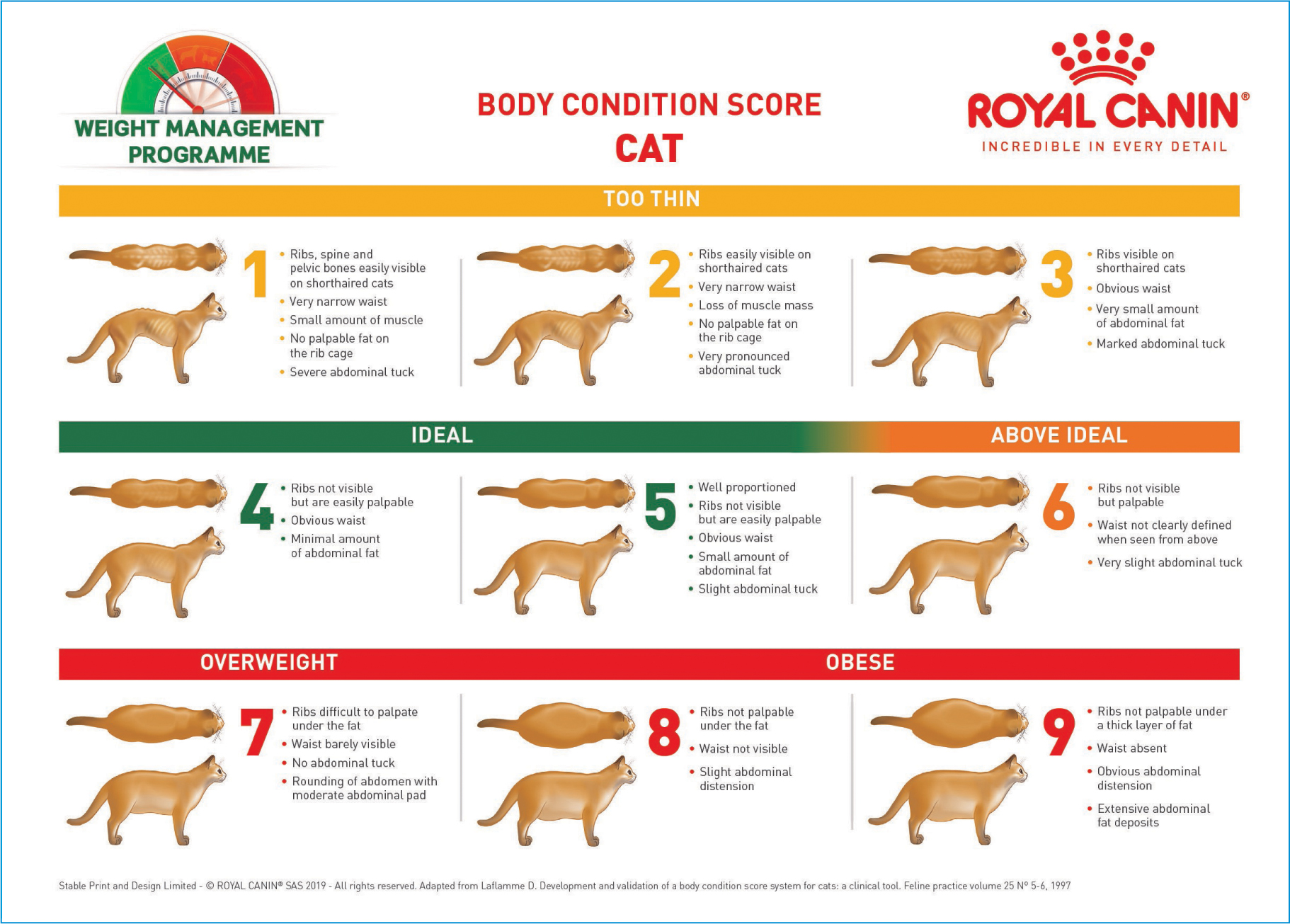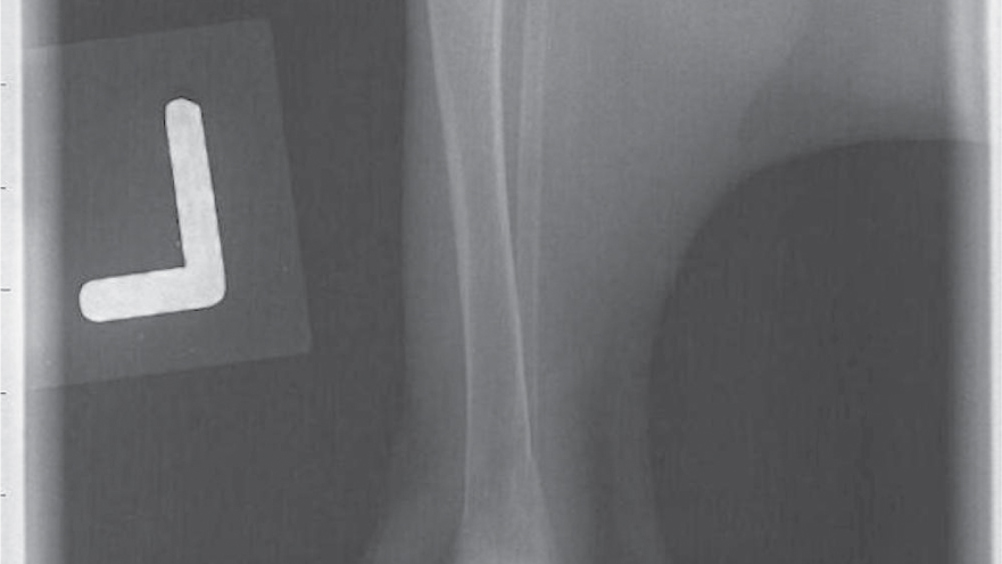Before looking in detail at the growth stages of kittens, it is important to understand some of the specific nutritional peculiarities of the cat. While dogs are omnivorous, cats are obligate carnivores and must have a meat-based diet (Grandjean, 2006). However, this is due to their dentition (Bradshaw, 2006), and does not mean that they cannot digest carbohydrates; indeed, a 2008 study by de-Oliveira et al proved that cats can efficiently digest processed carbs almost as effectively as dogs. Surprisingly, a review by Knight and Leitsberger (2016), concluded that it is possible for adult cats fed a vegetarian or even vegan diet to thrive, provided that the diet be checked as complete and balanced. However, it should be noted that the long-term health of the cats was not examined and many of the opinions regarding pet health were the subjective view of the cat owner. Additionally, their conclusion is at odds with long-established understanding of cats' absolute need for taurine — from meat or fish sources — in their diet, deficiencies of which can cause retinal degeneration and heart failure (Hayes, 1982; Novotny et al, 1994). It should also be noted that the British Veterinary Association does not recommend feeding a vegan or vegetarian diet to cats.
There are 11 essential amino acids which must be supplied within the cat's diet, one more than the dog with the addition of taurine to the list (Case et al, 2011; Box 1). Taurine is ideally sourced from meat, and a deficiency of taurine can cause retinal degeneration (Hayes et al, 1975). Other health complications seen in cats with taurine deficiency are cardiomyopathy, altered white blood cell function and abnormal growth and development (Hayes and Trautwein, 1989). More recently, Lenox et al (2015) published the case of a 5-month-old kitten with retinal degeneration due to taurine deficiency and pathological fractures due to metabolic bone disease, having been exclusively fed a raw-chicken diet for its whole life (see radiograph Figure 1).
Box 1.11 essential amino acids in the cat
- Arginine
- Histidine
- Isoleucine
- Leucine
- Lysine
- Methionine
- Phenylalanine
- Threonine
- Tryptophan
- Valine
- Taurine
(taken from Case et al, 2011)

Cats also have a much higher minimum protein requirement than dogs — 33 g versus 21 g for dogs per 100 g dry matter (DM) (FEDIAF, 2018). They are also highly sensitive to an arginine deficiency; as explained by Morris and Rogers (1978) from the University of California, a cat can become critically, and even fatally ill, from consuming just one meal that does not contain arginine.
Another notable nutritional idiosyncrasy in cats is their inability to convert the beta-carotene in vegetable matter to vitamin A. To ensure the cat's diet is balanced it must contain pre-formed vitamin A, which can be found in animal tissue. Arachidonic acid must also be included in a cat's diet and can be found in animal fat. The B vitamin, niacin, is also essential because a cat cannot convert tryptophan to niacin and this nutrient is essential for skin health (Grandjean, 2006) and for energy production (Case et al, 2011).
Nutritional requirements of the queen
Unlike bitches and humans, queens increase their food intake almost immediately on conception (Little et al, 2006) (Figure 2), and start gaining weight from around week two of their 65-day gestation (Case et al, 2011).

Queens gain more fat than bitches during gestation and tend to lose only 40% of the weight gained during pregnancy at parturition (Case et al, 2011), with the remaining 60% being stored as fat which is lost gradually during lactation. This is perhaps due to the cat being a sole predator in the wild that therefore would require plenty of stored energy to feed herself and her kittens when she cannot hunt.
There have been no studies on carbohydrate requirements in cats but according to Gross et al (2010) at least 10% DM of metabolisable energy should be derived from carbohydrates during lactation, to help preserve protein for glycolysis.
The energy requirements of the queen are at their peak around weeks six and seven of lactation — up to five times normal maintenance (Little et al, 2006); this is when most of the weaning will have been completed. One supposes that at this time, the need to hunt for sufficient food for her newly weaned brood and for herself, and keeping her curious and mischievous kittens in check, might be the reason for this. Peak lactation period is around weeks three and four, when the kittens are large and only just starting the weaning process (McCune, 2010).
Although cats have adapted well to the inclusion of carbohydrates in their diets there is no actual requirement for it to be present (FEDIAF, 2018). However, they are well able to tolerate high levels of carbohydrates and this is particularly beneficial during pregnancy when they can be a good source of energy, sparing protein to support fetal growth and help maintain the queen's lean muscle mass.
Also, certain fibre sources, such as mannan-oligosaccharides and fructo-oligosaccharides, can improve gut function and increase healthy gut flora populations (Grandjean, 2006). They can also be useful to improve stool quality which would be useful in late pregnancy when the queen may not be flexible enough to clean herself as thoroughly as usual.
The queen should be fed ad libitum throughout pregnancy allowing her to eat several small meals a day, which is a cat's preference and reflects their natural ability to hunt small prey multiple times (Bradshaw and Thorne, 1992). With only around 500 taste buds, compared with the appromately 9000 that humans have, taste is not the primary motivator (Grand-jean, 2006). A 2016 study by Hewson-Hughes et al found that the primary driver for palatability is macronutrient profile, with a preference for food with a protein:fat ratio of 70:30.
Even during pregnancy, cats prefer to eat alone, away from water bowls and latrines (Heath, 2001), but owners tend to feed them together and often in unsuitable places, perhaps because humans are social eaters or because cats often live within multi-cat households.
The primary reason for making diets for the different life stages of the cat are the differing energy requirements, as shown in Table 1.
Table 1. Energy requirements of cats at different lifestages
| Cats | |
|---|---|
| Postweaned | 250 kcal ME/kg bodyweight |
| 20 weeks | 130 kcal ME/kg bodyweight |
| 30 weeks | 100 kcal ME/kg bodyweight |
| Late gestation | 1.25 x adult maintenance ME |
| Lactation | 3 to 4 x adult maintenance ME |
ME = metabolisable energy
(Cave et al, 2011)Neonates
Kittens are born helpless, unable to stand, hear or see and totally dependent on their mother for the first few weeks of their lives (Little et al, 2006). Consequently, this pre-weaning stage carries the highest mortality rate at around 15–30%, with 90% of these dying within the first week (Gunn-Moore, 2006). One important contributing factor, along with maternal behaviour and other factors such as litter size, extreme features of pedigree cats such as Persians and Siamese cats, is the quality of the mother's diet during the last trimester of pregnancy. Maternal malnutrition is a significant contributing factor to low birth weight, and kittens with low birth weight are more likely to die (Gunn-Moore, 2006).
With only around 10–20% of antibodies crossing the placenta (Case et al, 2011), kittens rely on a high quality and adequate quantity of colostrum (first milk) to support healthy development. More importantly, colostrum provides passive immunity against some infectious diseases during the first 4 months of life (Case et al, 2011), so healthy kittens should suckle within 2 hours of birth. Colostrum is also important for the provision of other bioactive factors, as explained by Case et al (2011), such as lysozyme which prevents the growth of certain types of bacteria and bile salt-activated lipase, which aids digestion of fat. If colostrum is unavailable, for example due to the death of the queen, it has been shown by Levy et al (2001) that it may be beneficial to give serum from the adult cat by subcutaneous or intra-peritoneal injection to supplement the immunoglobulins not received via colostrum.
Kittens are born with a low percentage of body fat, a high percentage body water (82%) and a high requirement for glucose while being metabolically less able to generate it (Gunn-Moore, 2006). As all nutrition must be derived from milk, it is important that this be supplemented if there is an inadequate supply, using a formulation specifically made for kittens. Although it is acceptable for kittens to lose less than 10% bodyweight in the first 24 hours of life, thereafter, they should gain 5–10% per day — doubling their birth weight within 2 weeks — after which, they should continue to gain weight steadily. If the kittens do not gain sufficient weight, the maternal feeds should again be supplemented with a kitten-specific milk replacer. Table 2 shows the marked differences in composition between queen, cow and goat milk and effectively illustrates why it is inappropriate to supplement or hand rear a kitten using cow or goat milk.
Table 2. Comparison of milk from cows, goats and queens
| Cat | Cow | Goat | |
|---|---|---|---|
| Lactose (g/litre) | 40 | 47 | 41 |
| Protein (g/litre) | 75 | 33 | 35 |
| Fat (g/litre) | 85 | 36 | 38 |
| Energy (Kcal/litre) | 1210 | 640 | 690 |
| Calcium (g/litre) | 1.8 | 1.2 | 1.3 |
| Phosphorus (g/litre) | 1.6 | 0.9 | 1.4 |
Another important nutrient during the development stage, is the Ω3 essential fatty acid docosahexaenoic acid (DHA), which is vital during growth for neurological and retinal function (Case et al, 2011).
In addition, the immune system is still developing and a number of studies have shown that supplementing with antioxidants, specifically with lutein, vitamin A and E and beta-carotene, may help boost the immune response of kittens to vaccination (Kim et al, 2000; Koelsch and Smith, 2001; Khoo et al, 2005).
The physical aspects of a weaning diet should also be considered and something soft and palatable, with a high fat and protein content would be an ideal first food, offered at around 3–4 weeks of age. Soaked weaning kibbles would also be appropriate and this would allow for a gradual transition onto a complete dried food once weaned, if desired.
Post weaning
For healthy growth, kittens need specific levels and ratios of calcium (Ca) and phosphorus (P). As defined by FE-DIAF (2018), a complete diet should provide 2.5 g Ca and 2.10 g P per 1000 kcals. These levels are significantly higher than those needed to maintain an adult cat. Several studies have shown the pitfalls of unbalanced nutrition in kittens. For example, Crossley et al (2017) described a case of two 4-month old kittens who had been fed a complementary natural diet on top of their complete dry diet. The diet caused soft-tissue calcification resulting in breathing difficulties, wheezing, lethargy and retarded growth as a consequence of vitamin D toxicity.
Another potential nutritional complication during growth is of over supplementation of Ca leading to hypercalcaemia or hypophosphataemia (Case et al, 2011). This leads to Ca deposits in the kidneys and can result in chronic renal failure and serious effects on the gastrointestinal tract, cardiac function and possibly neurological effects.
Under-supplementation of Ca can cause nutritional secondary hyperparathyroidism, affecting animals fed a meatonly diet (Case et al, 2011). Interestingly, a case of nutritional secondary hyperparathyroidism was identified in a 3-month-old tiger cub (Won et al, 2004) having been fed a meat-only diet, which indicates that even growing wild cats can suffer with inappropriate Ca levels in their diet.
Neutering
Kittens usually reach mature body size at around 9 months (Case et al, 2011), and currently kittens in the UK are normally neutered at around 5.5–6 months of age. However, early neutering from as young as 7–8 weeks of age has long been a common practise by rescue centres, particularly in feral populations to help reduce the incidence of unwanted pregnancies. This practise has gained popularity in first opinion practices over the last few years and a 2015 review of literature by Borstad found that the only potential negative effect of early gonadectomy was a slowing of growth plate closure. While neutering does double the life expectancy of cats (Kraft, 1998), it does also increase the risk of obesity (Nguyen et al, 2004; Belsito et al, 2009) and Borstad notes that the age of neutering does not alter the level of risk.
It is believed that many factors influence the propensity to gain weight following neutering, but there is no doubt that the risk is greater in neutered cats. It should also be noted that activity levels drop in neutered cats while spontaneous consumption of food increases (Martin et al, 2001). These feeding patterns were noted in cats by Fettman (1997), who also observed that neutered male cats were at a greater risk of weight gain than neutered females.
According to Case et al (2011), the exact metabolic mechanism for these changes is not fully understood, but it is speculated that hormonal changes following neutering, such as increases in plasma concentrations of insulin-like growth factor-1 (IGF-1), may be a stimulus for adipocyte production and that an increase in prolactin helps maintain that adipose tissue. It may also contribute to the changes in glucose metabolism seen in obese cats, which can then lead to diabetes mellitus. Cave et al (2007) noted that oestrogen changes may be one cause and found that an injection of oestradiol inhibited the rise in appetite after neutering.
It is speculated that in humans the appetite-stimulating hormone ghrelin — the only hormone to signal satiety — may be responsible for over-eating (Sato et al, 2014). This may also be in partly responsible for the increase in spontaneous consumption by neutered pets.
Some studies (Fettman, 1997; Nguyen et al, 2004) have looked at basal metabolic requirements following neutering and found that neutered cats of both sexes require around one third fewer calories than intact cats.
One important observation (Case et al, 2011) is that neutering often simply coincides with the last part of a kitten's growth phase, where caloric requirements are reducing already and that neutered or not, the animal's energy intake should be decreased at this time. The weight gain then attributed to the neutering procedure may purely be the result of continuing to feed more calories than are necessary to maintain a healthy bodyweight.
As already mentioned, early neutering is becoming more common and it is important to remember that the fat and protein requirement of growing animals is higher than that of adults (Case et al, 2011). In addition, Ca and P must be carefully balanced during growth. So while the review by Borstad found that a cat's age at neutering was irrelevant to the development of obesity, kittens neutered while still in the early growth phase could potentially become malformed if fed a severely restricted diet. It is for this reason that it is vital to continue feeding early-neutered kittens a growth diet tailored to kittens and to remain vigilant of the kitten's body condition score, which should remain at a 4–5/9 (Figure 3) and seek advice should the kitten be above this score. It is fine to feed a diet formulated for an adult cat, provided the cat was neutered after 5.5 months of age, when the significant part of skeletal growth was complete. Body condition score should be maintained at 4–5/9 throughout the cat's life because being overweight — as well as living indoors and being sedentary — predisposes a cat to diabetes mellitus (Öhlund et al, 2017) and urinary stones and has a detrimental effect on the cat's quality of life.

Conclusion
Key points which differentiate the nutritional needs of cats from dogs are their requirement for taurine, pre-formed vitamin A and niacin to be provided within their diet and for increased protein levels, with a minimum of 33 g per 100 g DM provided. Right from conception to adulthood and through pregnancy, a cat's nutritional needs are markedly different from that of a dog. It is important to ensure that whichever diet one chooses to feed, it is complete and balanced for a cat, highly digestible and suits its specific life stage.
KEY POINTS
- Unlike gestating bitches, queens require an increase in energy immediately on conception and this is best achieved by ad lib feeding.
- If milk supplementation is needed, this should only be a milk replacer suitable for kittens and never cow or goat milk.
- Cats should not be fed a vegetarian or vegan diet as they require taurine derived from meat in their diet; however, an all-meat diet can be detrimental to their health.
- Energy requirements vary considerably during different growth stages of kittens and only diets formulated to meet FEDIAF guidelines can be considered complete and balanced.
- Kittens neutered early — before 6 months of age — should remain on a growth diet until that time, since they will still have significant growth to achieve.
- The primary palatability driver for kittens and cats is the macronutrient profile of the food, not its taste.


